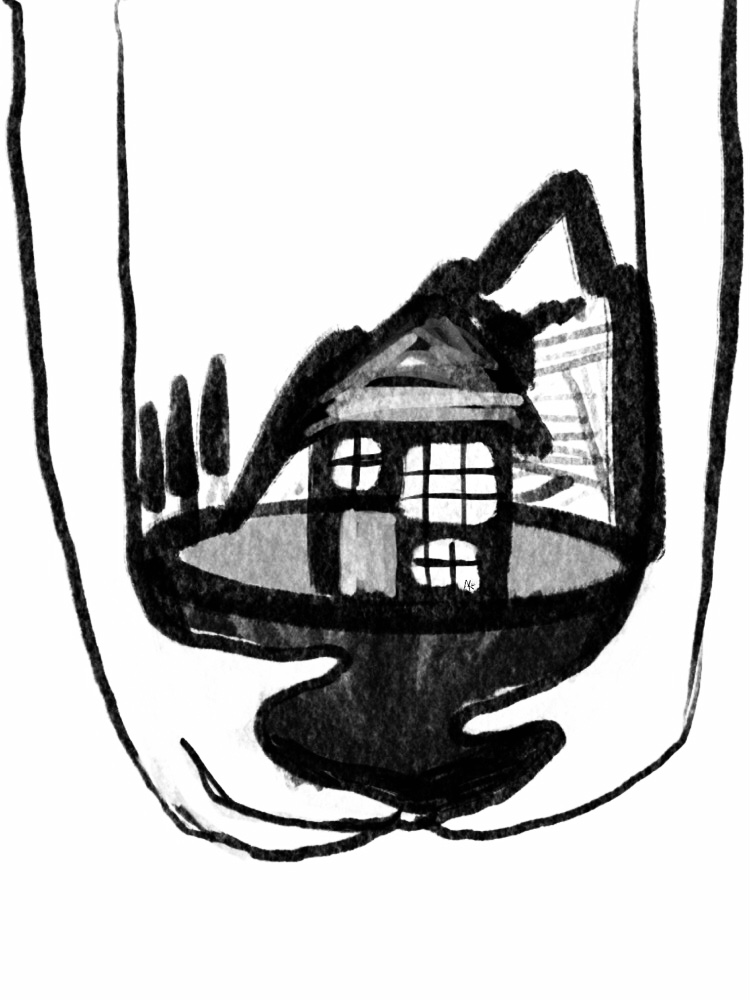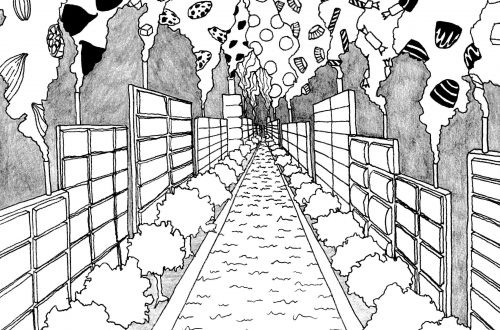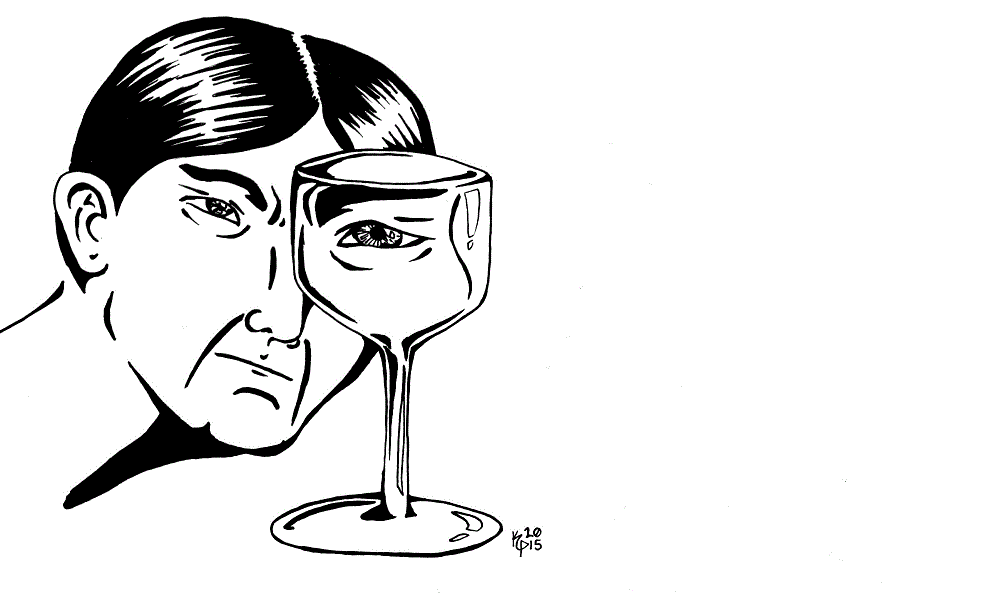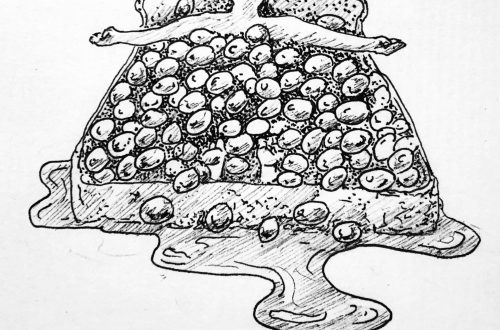by Christine Venzon
Christine’s essay appears in episode 37 of The Dirty Spoon Radio Hour.
When I was in grade school, lunch was the best part of the day. Mom’s peanut-butter-and-jelly sandwiches were love letters from home, a respite between the ordeals of gym class and arithmetic. As an afternoon snack, graham crackers swelled like pillows in a cup of hot, sweetened coffee, softening the blows of the day.
This was the first time I truly appreciated the experience of comfort food. I came by it honestly. Growing up in Italy, my mom tells me, she got the same feeling from soaking day-old bread in a café latte. Even better were the scrapings of polenta off the bottom of the pan. Her mother would soak the pan overnight in milk. By morning, the crust of cornmeal mush, softened into porridge and sprinkled with sugar, made a fine breakfast.
Like my father, my mother grew up on a small family farm in an Alpine village called Arsié. Raising cows, chickens, and a few goats for milk, meat, and eggs, plus hay and corn for feedstuffs, they knew food up-close-and-personal. My father emigrated to the United States in 1938, my mother 10 years later, after they married, as two world wars ravaged the northern Italian countryside and left the economy in shambles, and prospects off the farm were limited to hotel maid and gondolier.
They didn’t bring much in material goods but were loaded with the generations’ agricultural lore. My dad cultivated grapevines that produced gallons of home-bottled wine and quarts of homemade jelly. (Until I started school, I didn’t realize other people bought grape jelly in stores.) My mother carried an unwritten heritage of traditional recipes. Big family gatherings called for homemade ravioli and cappelletti and our Christmas dinner was rolled round steak, a country cousin to the fancier braciole: Steak smeared with minced garlic and hog-tied around sliced salt pork, served over homemade egg noodles.
The summer I was 16, my parents returned to Arsié to visit their families. They tried to get back every five years or so, even if it meant leaving my 19-year-old brother Mark and me in charge of the house. As kids, Mark and I shared a typical big-brother-little sister relationship. He played Road Runner to my Wile E. Coyote, Bugs Bunny to my Elmer Fudd. He always beat me to the best chair for watching TV, needled me in a tantrum with name-calling and put-downs. As teenagers, we coexisted in cold-war detente, ignoring each other as much as possible.
Looking back, we should have been closer. We were the tail end of six kids, the only ones still living at home. We were both homebodies at heart. Neither of us ran with the popular crowd at school; neither of us took part in extracurriculars. The neighborhood kids were our friends-by-default.
That summer, when my parents left for Italy, Mark took over our dad’s one-man lawn care service and filled out the checks our parents left for the utilities and newspaper. I took care of the house, the garden, and grocery shopping. I don’t recall cooking much; we probably subsisted on breakfast cereal, sandwiches and meals our mom had frozen for us. Of the garden, all I remember is the strawberry patch. It produced abundantly that June. Having free rein in the kitchen inspired me to try my hand at baking. Strawberry pie was a simple recipe, a family favorite. I whipped up a pie a week, which Mark happily devoured. Likewise with Bundt cakes and chocolate chip cookies. Food became our ambassador, the kitchen table our conference table, where we signed a peace treaty.
The next year, Mark finished classes in auto mechanics at junior college. The economy was slumping badly in the mid-1980s, and Mark’s only offer of a job came from our sister Eileen, who lived 800 miles away in Delaware. One of her friends was opening a garage and he needed a mechanic who was willing to work long hours for low wages. Mark didn’t care to move that far away, to a place he’d never seen and where he knew exactly one person. But a guy had to leave home sometime. compared to Italy, 800 miles was just down the road. Mark packed what little he owned in his ‘72 Mustang and traveled it.
A few years later, it was my turn. A horse lover since childhood, I returned from a summer course in horse and stable management in Kentucky, convinced that the track was my calling. But where I lived, amid the hog farms and cornfields of Illinois, horse racing was slightly less popular than spearfishing. The east coast, on the other hand, was a hotbed of horse sports, and Eileen’s friend still had connections from his days exercising Thoroughbreds.
That July, I went to visit Eileen and to make the rounds of area racing stables. My last day there, I got hired as a groom, an equine nanny. The next morning I started work. Mark found me a car, Eileen gave me the spare bedroom, and, at age 21, I was an instant, reluctant adult.
Caring for racehorses can be exhilarating, especially when you’re young and strong and a little naive, but socially isolating. It has its own arcane routines, tack and tackle, and lingo. The workday runs from before dawn to mid-afternoon, six and seven days a week. When other people my age were going out for dinner or a movie, I was going to bed.
Coworkers on the track tended to be a motley crew. Fair Hills was a beautiful training center, sprawling over 350 acres in northern Maryland. Horses galloped along rolling hills and wooded trails as well as on a racetrack. Yet the work was still hard and dirty. Turnover rates were high; people might work two weeks, collect a paycheck, and then move on. Others showed up drunk or stoned or disappeared entirely.
The next spring, I rented an apartment, the first of my own. It was a garden-level efficiency – i.e., a basement room with a bathroom. By day I looked out the only window at strangers’ feet passing on the sidewalk outside. Night always fell early in that cave, which was just as well. I had to turn in around ten o’clock to be at work by five the next morning.
Its sole saving grace was that it was in the same complex as Mark, though that wasn’t exactly by design. I picked it for the same reasons he did: it was cheap and close to work. But neither of us minded that the other was just a three-minute walk away. And since the TV reception on my 13-inch black-and-white set was on a par with that of a fallout shelter, Mark let me watch the horse races at his spacious and airy one-bedroom second-floor digs. Most major races are run on Sat afternoons, and the ones important enough to be televised run from late spring to early fall. Watching the races at Mark’s apartment became a ritual that lasted throughout the summer. I would go over in mid-afternoon and start dinner. He would get back from the garage a little later, and we would watch the races together and feast. I’d brought a copy of the cookbook Mom had edited for the Peoria Italian-American Society. It would become my bible. Harvest meatloaf, spaghetti pie, and zesty Baked Chicken – tried and true recipes, my mom’s own contributions. They carried with them the warmth and contentment of family dinners past and were followed by desserts of our childhood: rocky road ice cream, Oreo cookies, and Nutella straight from the jar.
We stuffed ourselves and talked into the night. Our taste in food was just a small part of what united us, and a longing for home cooking wasn’t the only one we filled. After all those years living in the same house, it took 800 miles and hamburger casseroles to learn how much we needed and cared for each other. Those Saturday dinners taught me that the real healing power of comfort food is its ability to comfort others when both comfort and food are shared.
“Do you remember that risotto Mom used to make?” Mark asked once. Of course, I did: a molten mound of rice, capped with drifts of grated cheese, eaten in concentric circles as it cooled. It was Italian peasant food, Americanized. No saffron, no shaved truffles, no Arborio rice. It was Mazola corn oil, Hunt’s tomato paste, and Campbell’s Chicken with Rice Soup. Only the cheese was gourmet. Every year, my grandfather sent a huge wheel of Asiago from his dairy cooperative in Arsié. He would mail it in a cheesecloth bag inked with our name and address. Mom would melt slices of cheese for our snack, filling the kitchen with its pungent aroma. Mark and I would gnaw on thick chunks of rind like dogs with rawhide bones.
I still have the recipe I asked Mom to send, written a half-page of a yellow legal pad, with the note: “You know I never measure my ingredients, so use your own judgment if you find it isn’t up to your taste.”
Not likely. When your taste is for the love and comfort of home, every bite is perfection.
Original artwork by Alex Knighten
About the Author
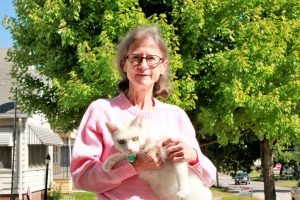 Christine Venzon was a food and food science textbook editor before she turned to writing essays and fiction. She is an award-winning children’s author; her short stories have appeared in general interest magazines and small-press anthologies. She was runner-up in the Saturday Evening Post’s Great American Fiction Contest in 2014 and 2017, with an honorable mention in 2021. She lives and writes in Illinois. As a creative diversion, she enjoys creating original recipes, with usually pleasing and generally edible results.
Christine Venzon was a food and food science textbook editor before she turned to writing essays and fiction. She is an award-winning children’s author; her short stories have appeared in general interest magazines and small-press anthologies. She was runner-up in the Saturday Evening Post’s Great American Fiction Contest in 2014 and 2017, with an honorable mention in 2021. She lives and writes in Illinois. As a creative diversion, she enjoys creating original recipes, with usually pleasing and generally edible results.

